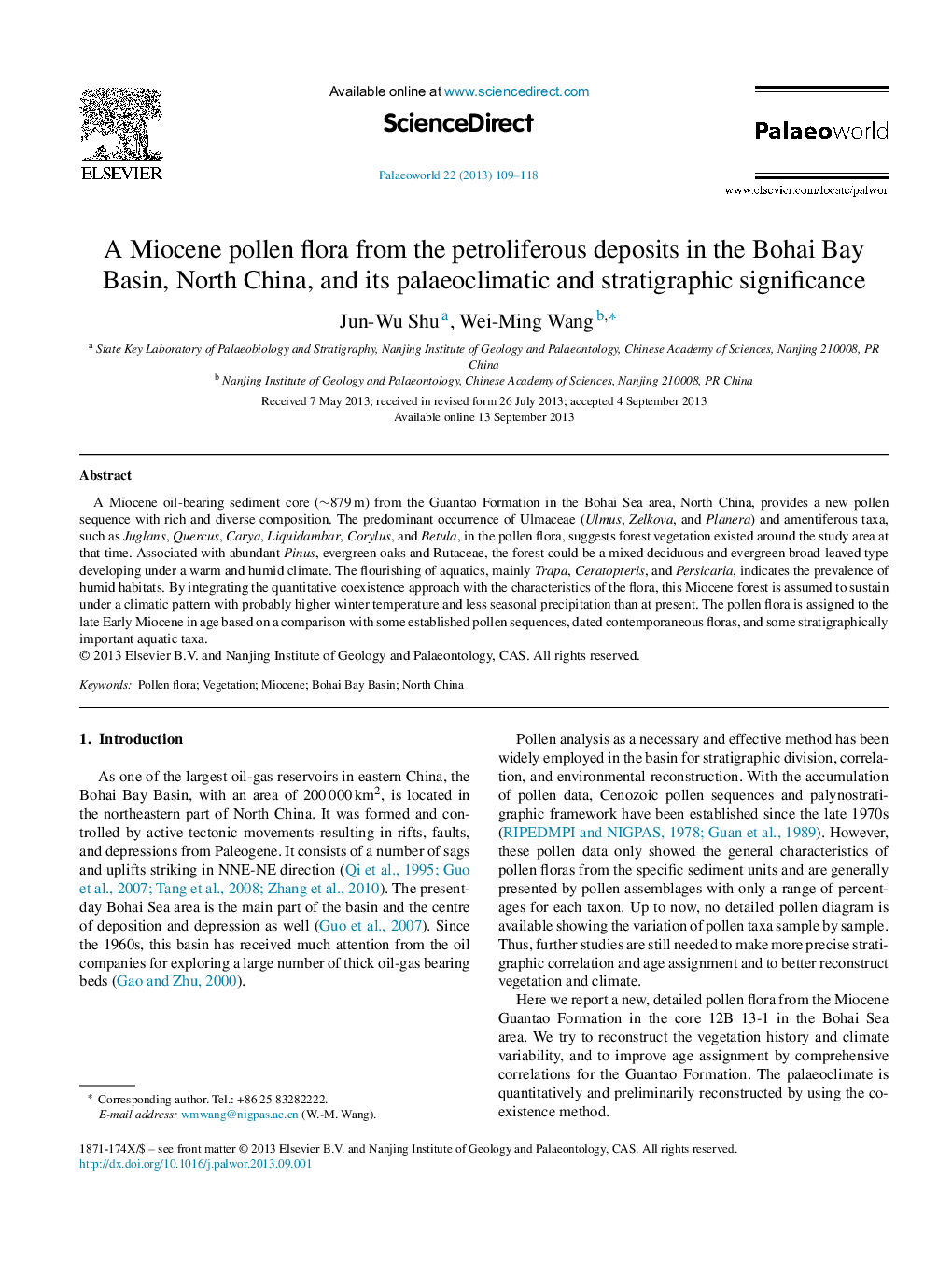| Article ID | Journal | Published Year | Pages | File Type |
|---|---|---|---|---|
| 4749689 | Palaeoworld | 2013 | 10 Pages |
A Miocene oil-bearing sediment core (∼879 m) from the Guantao Formation in the Bohai Sea area, North China, provides a new pollen sequence with rich and diverse composition. The predominant occurrence of Ulmaceae (Ulmus, Zelkova, and Planera) and amentiferous taxa, such as Juglans, Quercus, Carya, Liquidambar, Corylus, and Betula, in the pollen flora, suggests forest vegetation existed around the study area at that time. Associated with abundant Pinus, evergreen oaks and Rutaceae, the forest could be a mixed deciduous and evergreen broad-leaved type developing under a warm and humid climate. The flourishing of aquatics, mainly Trapa, Ceratopteris, and Persicaria, indicates the prevalence of humid habitats. By integrating the quantitative coexistence approach with the characteristics of the flora, this Miocene forest is assumed to sustain under a climatic pattern with probably higher winter temperature and less seasonal precipitation than at present. The pollen flora is assigned to the late Early Miocene in age based on a comparison with some established pollen sequences, dated contemporaneous floras, and some stratigraphically important aquatic taxa.
